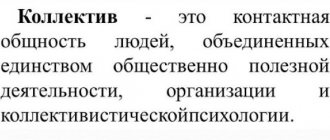Perceptual actions: what are they?
Perception, or perception, is a person’s ability to reflect surrounding objects and situations. Based on the data obtained in the process of perception, knowledge of the surrounding reality is carried out and an individual (subjective) understanding of it is formed.
Each person is unique, which is why human culture and art are so diverse. However, despite differences in perception, each person goes through certain stages in his development, which are accompanied by the implementation of specific actions. These actions were studied and called perceptual.
Perceptual actions are included in the structure of the perception process and the structure of human activity. Perception is an active process, so it is inextricably linked with activity. From a very early age, a person performs actions aimed at cognition and learning. After all, in order to live in this world, he needs to know this world and be able to interact with it.
External and internal factors of perception
Let's return to the Subject-Object formula. So, in the process of perception there is an interaction between subject and object. Problem: what determines the image of perception - external or internal factors. Gestalt psychology studied mainly the determination of perception on the part of objective factors, etc. first of all, the structural qualities of stimulation.
In activity theory, the problem of the relationship between external and internal factors in the process of perception is solved through the concept of “perceptual activity”. On the one hand, it is a manifestation of the subject’s activity (the action of internal factors); on the other, perceptual actions are subject to the properties of the object (the idea of assimilation by A.N. Leontiev).
In studies of the “New Look” direction (D. Bruner, L. Postman, etc.) it was shown that perception also depends on the motives, intentions and goals of the subject, that is, on internal factors. In line with this direction, three mechanisms of selectivity (selectivity) of perception were formulated.
1. The principle of resonance - stimuli that meet (correspond to) the needs and values of the individual are perceived more correctly and faster than those that do not correspond to them.
2. The principle of protection - stimuli that contradict the subject’s expectations or carry potentially hostile information are recognized less well and are subject to greater distortion.
3. The principle of alertness or sensitivity - stimuli that threaten the integrity of the individual, which can lead to serious disturbances in mental functioning. are recognized faster than everyone else.
The concept of perceptual defense was also introduced. That is, distortions of perception under the influence of efficiency (emotional factors).
Being a function of the “Ego,” perceptual defense is designed to protect the personality from traumatic experiences. Perceptual defense cannot be understood without referring to the Freudian model of personality with its asocial tendencies and censorship authorities, the eternal conflict between the “Id”. the pleasure seeker, the stern censor of the “Super-ego” and the realist of the “I”.
L. Bellak presented the concept of projective behavior, which demonstrates individual differences in perception under the influence of the motives and feelings of the perceivers. Projection is a form of apperceptive distortion. L. Bellak gives the following witty example of the operation of this mechanism. Suppose Jean wants to ask Jacques for a grass clipper. Heading towards the neighbor's yard, he mentally imagines his dialogue with Jacques. “Jacques will tell me that last time I returned the machine dirty. I will tell him that I returned it the way I took it. Then he will say that that time. when I was dragging the typewriter, I damaged his fence...” The imaginary dialogue continues in this spirit all the way to Jacques’ house. Seeing a friendly owner on the porch of the house, Jean suddenly blurts out: “You can keep your precious car with you.” It is obvious that Jean's behavior is a reaction not to the actual aggressiveness of his neighbor, but to his own memories of it.
The dependence of perception on internal conditions, its mediation by personal factors (motives, emotions, interests) is expressed in the concept of apperception. Attitude, that is, the readiness to perceive something or act in a certain way, also acts as factors influencing perception. Let me give you an example. Subjects in three groups were told that a person was about to enter the room, and they had to estimate approximately his height. In the first group of subjects this person was posed as a laboratory assistant, in the second as a teacher, in the third as a professor (of course, in all three groups it was the same person).
It turned out that in the first group the height of the person was the smallest.
Stages of formation and development
The formation of perceptual actions occurs during the learning process. Their development is divided into three stages.
At the first stage, the formation of perceptual action itself occurs, which begins with the child performing practical actions with unfamiliar objects. As a result, the formation of perceptual tasks occurs - the formation of an adequate image of an object, which subsequently becomes a sensory standard.
At the second stage, a restructuring of sensory processes (occurring in the sense organs) occurs, which become perceptual actions under the influence of practical activities. Actions are carried out with the help of receptor apparatus (tactile and visual), children become familiar with the spatial properties of objects.
At the third stage, the process of reducing and curtailing external actions occurs. They become hidden, occurring at the level of consciousness and subconscious. The external process of perception becomes an act of instantaneous discretion.
By this time, the child has formed a system of sensory standards (socially developed systems of sensory qualities, for example, a system of geometric shapes, etc.). Thanks to them, sensory-perceptual actions change. They turn from a process of image construction into a process of identification.
Properties of perception
You might be interested in: Psychology. Discretion is...
Perception ensures the functioning of various mental processes.
The perception of an object as a specific image, regardless of its location, provides such a property of perception as objectivity.
Simultaneously with the perception of an image (natural or, for example, drawn), its properties are also reproduced in consciousness.
- Such a property as integrity is expressed in the fact that an object is recognized regardless of whether all its parts are present, whether they are distorted, or whether their location in the object is incorrect.
- The meaningfulness of perception during the normal functioning of the human psyche can be traced in the fact that the observed object is correlated with a specific class, category (classified).
- Observed objects (or situations) are perceived as unchanged, even if the conditions of their demonstration change. So, for example, by feeling an object in complete darkness, a person can correctly determine what it is and name its main characteristics. This property of perceptual activity is called constancy.
- This property of perception, such as structure, allows you to perceive the environment reliably, even if sensations are not connected. The expression “glass surface of a lake” paints a specific image of a perfectly smooth, shiny, bluish-greenish surface of a reservoir.
- The individual state of mind necessarily influences perception: stormy weather delights some, but frightens others immensely and creates a state of panic. This property of perception is called apperception.
- Perception depends on the conditions in which it occurs. The perception of the same thunderstorm in a real situation and, for example, when watching a movie, will occur differently, which is where such a property of perception as contextuality manifests itself.
Levels
Perceptual action can be divided into four levels:
- detection (characterized by the detection of a stimulus);
- discrimination (at this level perception occurs with the subsequent formation of a perceptual image);
- comparison or identification (at this level, the perceived object is identified with the image that is stored in memory; or several objects are compared);
- identification (the corresponding standard is extracted from memory and the object is categorized).
Types of perception
In psychology, perceptual is associated with perception. Perceptual actions are actions aimed at sensory knowledge of the surrounding world. They can have a different character, depending on the type of perception. Experts distinguish three types of sensory knowledge of the surrounding world:
- cognition through vision;
- cognition through hearing;
- formation of a picture of the world using tactile sensations.
Self-control - what is it in psychology, definition
Knowing the leading type of sensory perception of the patient, the psychologist can easily find an individual approach to him. To do this, it is necessary to make maximum use of exactly that perceptual sphere to which a particular person is most sensitive, using exclusively auditory, visual or tactile stimuli and stimuli. This is not difficult to do; in modern practical psychology there are many ways to activate the work of various senses.
Interesting. People who are equally well developed in all types of sensory perception are extremely rare. Most often, one type is in the lead (for example, visual), other types fade into the background. A person who has no developed perception at all is also a very rare phenomenon.
Visual
A person who has a heightened visual perception of the world reacts especially vividly to any visual stimuli and irritants. As a rule, such people are interested in painting, love to look at pictures, have an excellent visual memory and remember people by their faces.
Auditory
A person who has the most developed auditory method of cognition of the world around him often has absolute pitch and easily reproduces any intonation he hears. Such people often connect their lives with music. The main disadvantage is increased sensitivity to loud and disharmonious sounds.
The perception of sounds plays an important role in the formation of a picture of the world
Tactile
There are people who, in order to remember information, must touch an object with their hands, feel it and remember their tactile sensations. In this case, we can talk about a heightened sense of touch. This type of perception develops especially strongly in early childhood, so exercises with children to improve fine motor skills have the most beneficial effect on memory and intelligence.
Game and development
Perceptual actions in preschoolers are a fruitful connection between the actions of orientation and exploration with the actions of execution. And the unity of visual and manual actions ensures the accuracy of perceptual analysis.
Children learn about the world around them through play. While playing, they actively process and assimilate new information. Thus, they accept social norms and rules for successful adaptation in society.
In preschool children, the following types of perceptual actions are distinguished:
- identification actions (object identification);
- actions in relation to the standard (comparing the properties of the object with the standard);
- modeling the actions of perception (by mastering productive activities, the child learns to create new objects: modeling, drawing, inventing).
Article:
One of the main lines of a modern developing society is the humanization of the educational system, which involves increasing interest in the unique emerging personality of the child and poses the task of developing a holistic, emotional, semantic, personal worldview.
The perceptual development of a child is of independent importance, since it provides clear ideas about the world around him and, at the same time, forms the foundation of the child’s overall mental development, which is impossible without relying on full perception. Sensory development of children influences speech development and perceptual development of children. Mastery of perceptual actions forms the basis of general mental development in the first stages of ontogenesis. With the help of perceptual actions, the ground is prepared for the development of the entire arsenal of mental actions, which will determine the knowledge of external and internal (essential) properties of things, connections and dependencies hidden from observation.
The correct education of the perceptive organs can hardly be overestimated, especially if during the development of the child they will monitor not only their physical condition and correct functioning, but also the further development of intellectual processes directly related to these organs. It is not enough for a child to learn to look and see correctly, but it is necessary that he knows how to observe, that he easily grasps the characteristic features of objects, that he understands the harmony of colors, that he knows how to enjoy nature.
At the present stage of development, the topic of development and training of perceptual actions in preschoolers with SLD is very relevant.
General speech underdevelopment is a variety of complex speech disorders in which the formation of all components of the speech system is impaired. [10]
Recently, there are more and more children with speech pathology. There are many manifestations of general speech underdevelopment. [5]
In groups of modern preschool educational institutions, children with special needs are increasingly appearing. They have impaired formation of all its components, primarily the sound and semantic aspects of the speech system, with intact hearing and intelligence. L.S. Vygodsky wrote: “A defect in some analyzer or an intellectual defect does not cause an isolated loss of one function, but leads to a whole series of deviations.” Indeed, defective speech activity leaves its mark on the formation of sensory, intellectual and affective-volitional spheres. [9]
Children with ODD, notes E, F, Sobotovich, are distinguished from normal peers by a slightly lower level of generalization, insufficient flexibility and dynamism of thinking, and a slower rate of assimilation of certain patterns. [7]
All mental processes in a child: perception, attention, memory, thinking, imagination - are associated with speech. Speech is formed under the influence of higher mental functions, but they, in turn, develop under the influence of speech.
All children with OHP always have a violation of sound pronunciation, underdevelopment of phonemic hearing, and a pronounced lag in the formation of vocabulary and grammatical structure. [6]
Preschool childhood is a large period of a child’s life. This is a period of mastering the social space of human relationships through communication with close adults, as well as through play and real relationships with peers. [8]
Purposeful perceptual education, including taking place in the conditions of a specially created objective world. In the objective world, figurative-sign systems are presented as objects of objective reality, which reflect standard signs (colors, shapes, etc.).
According to the definition given by V.P. Zinchenko and B.G. Meshcheryakov, perceptual actions are “the basic structural units of the human perception process...”.
Perceptual actions and criteria for the adequacy of the image do not remain unchanged, but go through a significant development path along with the development of the activity itself.
Studies of perceptual actions in conditions of constructive activity have shown that children develop complex types of visual analysis and synthesis. We are talking here about such types of productive activities as drawing, designing, modeling, etc.
Children develop the ability to sequentially inspect parts and structural elements, identify components of complex shapes and establish their relative positions. Research on this issue has shown that the development of a child’s perceptual actions in games in figurative and symbolic forms is carried out through mastering the functional purpose of objects in the objective world.
“From the perception of objects and phenomena of the surrounding world,” wrote L.A. Wenger, - knowledge begins. All other forms of cognition - memorization, thinking, imagination - are built on the basis of images of perception and are the result of their processing3.” As studies by L.A. have shown. Wenger, already in the first months of life, a rather subtle “approximate” distinction between old and new objects (differing from each other in size, color, shape, etc.) is achieved, but the formation of constant, objective perceptual images that are necessary for control does not yet occur. complex, variable forms of behavior. [3]
Throughout preschool childhood, three main types of perceptual actions develop:
· identification actions,
actions of relation to the standard,
· modeling actions.
Modeling actions of perception develop in the process of mastering productive activities aimed not only at using existing ones, but also at creating new objects (designing, drawing, modeling, the simplest types of manual labor). [2]
Perceptual actions are the driving force behind the development of the perception process. They lead to the creation of an adequate picture of the surrounding world, through the selection and transformation of sensory information.
Thus, perceptual actions are actions aimed at receiving, analyzing and clarifying sensory information. Mastery of perceptual actions forms the basis of mental development in the first stages of ontogenesis. Perceptual development is inextricably linked with the development of the cultural and historical experience of mankind.
A child's perception is closely related to play. In the game, he models all the fragments of the surrounding life and new information that aroused his interest, and actively learns the perceived information. Role-playing games are of particular importance in the life of a preschooler, in which he learns the laws of communication, social relationships, characters and social roles of people. [4]
The connection of perception with thinking and speech leads to its intellectualization. The examination of the properties of various objects in preschool age occurs by modeling them, replacing them with ideal representations - sensory standards.
In preschool children, perceptual actions in the context of solving constructive problems reveal a productive connection between orienting-exploratory and performing actions. The accuracy of perceptual analysis at this age stage is largely due to the unity of visual and manual actions.
Disturbed speech activity leaves an imprint on the formation of the perceptual sphere in preschool children.
The perceptual development of children with ODD includes the enrichment of sensory experience through the development of different ways of examining objects, improving the sense of touch, vision, hearing, taste, and smell; mastering sensory standards - color, shape, size; development of auditory perception in exercises for recognizing and distinguishing the voices of nature, household noises, contrasting sounds of several toys or substitute objects; development of visual perception in exercises for recognizing and distinguishing small and large objects, objects of different shapes, painted in different colors, the ability to compare objects, select a group of objects according to a given characteristic. [1]
Insufficiently developed perceptual actions in children with ODD are characterized by limited performance of tasks and are associated with insufficient development of the system of sensory standards, in particular the process of perception, attention and the possibility of its distribution; the productivity of attention suffers, and verbal and logical thinking lags behind in the development.
The main goal of correction of the perceptual sphere is to form a system of sensory standards. To achieve this goal, a specially organized perception of objects (examination) is necessary to use its results in one or another meaningful activity.
Literature:
1. A.A. Strokova, Program for speech therapists in the course “Speech Development” in the conditions of a speech therapy center at a preschool educational institution [Text]/ Preschool pedagogy, 2013, No. 6. - 27-33s.
2. Wenger L.A. and others. Education of the sensory culture of a child from birth to 6 years of age in institutions / Ed. L.A. Venger [Text] - M.: Education, 1988. - 144 p.
3. Wenger L. A., Pilyugina E. G., Wenger N. B. Education of a child’s sensory culture from birth to 6 years [Text]. - M.: Education, 1988. - 230 p.
4. Vygotsky L. S. Pedagogical psychology [Text] - M.: Pedagogy - Press, 1996. - 536 p.
5. G. Dmitrieva, Interactive whiteboard as an innovative form of correction of speech underdevelopment [Text]/ Preschool education, 2012, No. 12. — 58-63 s.
6. Children's logopsychology: textbook. a manual for university students studying in the specialty “Specialty”. doshk. pedagogy and psychology » [Text]/ Ed. V.I. Seliverstova - M., Humanitarian. ed. VLADOS center, 2008. - 175 p.
7. Logopsychology: textbook. manual for students [Text]/ Ed. R.I. Lalaeva, S.N. Shakhovskaya - M., Humanitarian. ed. VLADOS center, 2013. - 462 p.
8. Nikitin B.P. Educational games. — 5th ed. add. [Text] - M.: Knowledge, 2004. - 128 p.
9. O. Golubets, M. Zhilichkina Interaction between a teacher-speech therapist and an educational psychologist. Development of the cognitive sphere in children with special needs [Text]/ Preschool education, 2013, No. 3. — 49-58 s.
10. Special psychology: a textbook for students of higher educational institutions / Ed. V.I. Lubovsky. — 6th ed., rev. and additional [Text] - M.: Publishing House, 2009. - 560 p.
Perceptual systems
In the process of activity, a person constantly needs to solve some problems that require the perception of the most adequate reflection of the situation. Human perceptual systems are designed to solve these problems. These include:
- visual system;
- auditory;
- musculocutaneous;
- olfactory-gustatory;
- vestibular.
All of them provide the brain with the necessary information, which is used for the normal functioning and development of a person, both physically and mentally.
Perceptual learning theories
Perceptual learning
Any acquisition of new perceptual skills and abilities that is conditioned by the environment.
There are two theories of perceptual learning:
- Enrichment theory.
- Specificity theory.
In the first theory, the main role is given to experience, and in the second - stimulation.
Experiments on the formation of skin sensitivity
Alexey Nikolaevich Leontiev conducted an experiment on the formation of nonspecific sensitivity of the skin of the hand to a light stimulus.
Conclusions:
- The possibility of forming a new type of sensitivity is shown.
- It has been established that this sensitivity is formed in a situation where the subject is actively involved in orientation-research activities.
The role of the motor element in the formation of pitch hearing
Experiment by A.N. Leontyeva, Yu.B. Gippenreiter and O.V. Ovchinnikova .
The process of perception is a process of assimilation of the dynamics of the process itself to the properties of an external stimulus.
In hearing, the function of the motor component of the perceptual process is performed by the vocal apparatus. Thus, a new motor link was created: the movement of the hand was likened to a change in the pitch of sound.
Human sensory-perceptual system
Sensory processes are sensations. A person constantly feels the influence of the external world on his body: he sees, hears, smells and tastes, feels tactile and temperature effects on his body. It also senses processes occurring inside the body: hunger, pain, excitement or weakness, etc.
The sensory-perceptual system is constantly developing and improving in the process of human life. This is necessary for a person’s successful adaptation to the outside world. A person’s abilities and capabilities depend on the quality of the perception system.
This is especially noticeable when compared with people who have disturbances in the development of perception. The life of a person with disabilities (blindness, deafness, muteness, etc.) differs from the life of an absolutely healthy person. Perceptual actions play a significant role here: the more minor the perception defect, the easier it is to correct and possibly correct it. This is done by specialists - defectologists.
Perception in psychology
Perception in psychology is a person’s attitude to the world, which is formed under the influence of information received from the outside through the main sense organs. Translated from Latin, this word means “perception.” The opposite concept is apperception. A person needs to perceive the world correctly, because perception:
- helps to develop the right attitude towards people;
- promotes activation of cognitive function of the brain;
- promotes effective communication;
- makes it possible to correctly evaluate yourself and those around you.
This concept is one of the most studied in theoretical and practical psychology. Perception skills are formed from early childhood, so parents should give their child as much information as possible that can be learned through the senses. This could be music and various sounds, beautiful images, toys for the development of tactile skills.
The importance of the perception system for humans
Scientists have been studying higher mental functions of humans (thinking, memory, voluntary action) for many years. The relationship between the system of perception and activity and the development of human thinking has been proven. In turn, thinking has a significant impact on a person’s condition, his abilities and capabilities. Perception is one of the highest mental functions of a person.
In order to live, a person needs to constantly reflect the surrounding reality and respond to the perceived information. Perception provides an individual and at the same time adequate reflection of reality. This is especially important for solving perceptual problems. Perceptual actions in the process of perception play an important role; they ensure the full development of the human psyche.
Simply put, to be healthy and happy, a person needs to be involved in some kind of activity. The brain is designed in such a way that it constantly needs to process and assimilate new information, otherwise it begins to become “lazy.” And a “lazy brain” is the first step to the development of dementia.
Classification of perception
There are two classifications of perception. The first is based on differences in analyzers that play a predominant role in perception. Thus, visual, auditory, tactile, olfactory, gustatory, and kinesthetic perception are distinguished.
The basis of the second classification is the forms of existence of matter. The perception of space, time and movement is distinguished.
The perception of space is the perception of shape and size. The relative position of objects, their relief, distance and direction. In the perception of the spatial properties of things, tactile and kinesthetic sensations play a certain role, but the basis is visual data.
Two mechanisms play a significant role in the perception of magnitude: accommodation and convergence. Accommodation is a change in the refractive power of the lens by changing its curvature. When perceiving close objects, the shape of the lens becomes more convex, while distant objects, on the contrary, become concave. Convergence is the bringing together of the visual axes on a fixed object.
The perception of depth and distance is carried out thanks to binacularity. Even though we see with both eyes, there is only one image, not two. This is achieved due to the presence of corresponding points on the retina, that is, points on the retina of one eye correspond to points on the retina of the other eye.
Perception of the direction in which objects are located is possible not only with the help of the visual, but also with the help of the auditory, motor and olfactory analyzer.
The perception of time is a reflection of objective duration: the speed and sequence of phenomena of reality. This type of perception is based on a rhythmic change of excitation and inhibition in the central nervous system. The so-called biological clock—cyclical phenomena—heartbeat, breathing rhythm, sleep and wakefulness, the appearance of hunger and satiety are of great importance. Kinaesthetic and auditory sensations are involved in the perception of time.
The perception of time is determined by the content that fills it. So, busy with interesting activities, we don’t notice. How time flies. While idle, we, on the contrary, do not know how to kill time. However, remembering, we will evaluate the first interval as longer. compared to the second. This phenomenon reveals the law of the filled time period. Individual differences also affect the subjective assessment of time: for example, some people show a strong tendency to underestimate time, while others overestimate it.
The perception of time is also influenced by a person's emotions. The waiting time for a desirable event is painful, and the waiting time for an undesirable event is painful. This reveals the law of emotional determinism of time assessment. It is also reflected in the fact that time filled with events with a positive emotional connotation is reduced in experience, while time filled with events with a negative emotional sign increases: “Sad hours are long,” says Romeo.
“Happy hours don’t notice,” Griboyedov notes.
The perception of motion is a reflection of the change in position that objects occupy in space. There are two ways to perceive movement:
1. When the image of an object on the retina remains more or less motionless.
2. The eye remains relatively motionless, and the image of the object is mixed on the retina.
There are real and apparent movements.
An example of apparent movement is stroboscopic movement, on the principle of which cinema is built. It is known that the visual sensation does not disappear immediately, therefore, when frames flicker (24 frames per second), we do not see this flickering, but see a stable image.
From the standpoint of Gestalt psychology, several special works have been carried out on the perception of movement. K. Duncker posed the question: due to what conditions, when spatial relations change in our field of vision, some of the perceived objects seem to be moving, others motionless. So, for example, why does it seem to us that the moon is moving, and not the clouds? According to Duncker. An object that is clearly localized on some other object is perceived as moving: the figure moves, not the background. Thus, when the moon is fixed among the clouds, it is perceived as moving.
E. Oppenheimer also showed that of two objects, the smaller one usually seems to move. The object that undergoes the greatest qualitative and quantitative changes also seems to move.
Beginning of the form
End of form
Beginning of the form
End of form
Examples of similar educational works
Factors and psychological mechanisms of perception
...perception. Activity ensures an extremely adequate perception of objects. Perception...image on the retina...sounds. Under the action of a multimodal stimulus... the property is movement; the two later ... perceptions distinguish two forms of perception: ...
Perception and learning
...perception includes motor components: feeling objects and eye movement; singing sounds or pronouncing speech forms; sniffing, etc. The perception ... of the entire required sequence of actions is directed, the trainer gives encouragement ...
Psychophysiology of perception in human professional activity
... the work of the receptors themselves. There are different types of perception: 1) The perception of the movement of surrounding objects occurs due to the fact that the movement is carried out against some background. This allows the retina of the eye to consistently reproduce what is happening...
Perception, memory (mental)
...perception of the size, shape, volume and distance of objects and perception of the position of one’s own body. Explain visual illusions. Reveal the basic patterns of perception of time and movement. ... falling on the retina of the eye looks...
The influence of cultural and historical experience on a person
Modern people are so accustomed to freely receiving any information that they don’t even think about the fact that this is the result of the activities of a huge number of people. Their contribution to the development of modern society is enormous. Everything that a person can and knows is not only his merit, but also the property of society as a whole.
Perception is a system of perceptual actions, mastery of which occurs in the process of special training and practice. A child can master sensory standards only with the help of an adult who guides him and helps him identify the most significant features of objects and situations. This is very important for analyzing reality and systematizing the child’s personal sensory experience.
There are cases where children were deprived of communication with their own kind. These are the so-called “children of Mowgli”, raised by animals. Even after returning them to human society, it was rarely possible to adapt them to human society.
Concept of perception
In the previous lecture, we looked at the process of reflecting individual properties and qualities of the external and internal world, which is called sensation.
However, man does not live in a world of isolated qualities, spots of light or color, sounds or touches. He lives in the world of things, objects, forms, in the world of complex situations and deals not with individual sensations, but with whole images. Sensations and perceptions are a sensory reflection of reality with its direct impact on the senses. However, we define these processes as opposite: if the sensation is a reflection of the individual properties of objects in the material world. as well as internal states of the body, then perception is a reflection of phenomena as a whole with their direct impact on the senses.
Perception is not the sum of sensations. It requires isolating the main, leading features from the complex of influencing features while simultaneously abstracting from the unimportant ones. Perception is the result of complex analytical and synthetic work. distinguishing some features from others, combining perceived details into one meaningful whole. Thus, perception is closely related to thinking.
The process of perception also requires a comparison of the image of an object with previous gaps about it. If in the process of such comparison the hypothesis about the alleged object coincides with the incoming information, then recognition of the object occurs, and the process of perception is completed. For example, if I now show you a familiar object, you will instantly recognize it and name it. The image of this object is already stored in your memory; you have seen it many times. However, if an unfamiliar object (for example, some exotic fruit or an unfamiliar device) comes into your field of perception, then you will examine it and make hypotheses about what it really is.
According to L.N. Leontiev, the psychology of perception is scientific knowledge about that. how in life we build an image of the world and how it functions in life. The function of the image is the self-reflection of the world. This is a function of nature’s “intervention” in itself through the activities of subjects. The image of the world, enriching and changing throughout the subject’s life, plays a crucial role in the regulation of his life activity.
Does an adult have perceptual activity?
Since perceptual actions are actions of learning and cognition, it may seem that they are unique to childhood. However, this is not so: every time an adult learns something new (a hobby, a new profession, foreign languages, etc.), a system of perceptual actions is activated, which helps to quickly master new knowledge and skills.
Man is a unique creature, his possibilities are limitless, and all this is thanks to consciousness and psyche. It is they who distinguish man from all life on the planet. Only a person is capable of voluntarily regulating his activities in accordance with his desires. Human activity is not chaotic and unsystematic, but is part of the structure of consciousness and thinking. Until now, scientists all over the world are studying the human psyche, making new discoveries, but it still remains a mystery.
Properties of perception
Perception has the following properties:
Objectivity—in the image of perception we reflect not our subjective states, but phenomena and objects of the objective world. Objectivity consists in attributing our impressions of an object to a given object. Perception has this property due to the perceptual actions involved in perception.
Integrity and structure—these properties of perception have been studied in most detail by Gestalt psychologists. Problem: how the phenomenal world is organized in perception. When we look around, what we see is not a chaos of sensations (color spots, lines, individual currents), but an environment clearly divided into meaningful objects, that is, perception is a holistic, structurally organized process.
In Gestalt psychology, the laws of perception were formulated, which govern the perception of form. For the perception of a figure, great importance is attached to the background, which serves as the general level on which the figure appears. Figure and ground together form a single structure, therefore, the former cannot exist without the latter. Gestalt psychologists formulated the principle of pregnancy: our perception strives to be as simple and good as the stimulus conditions allow. Let us name some of the laws of perception that meet this principle:
1. The law of proximity - the closer objects are to each other in the visual field, the more likely they are organized into single, holistic images:
2. 3law of continuation - if elements have the property of continuation, acting as parts of a simple whole, then they can be easily organized into related units:
3. The law of addition to the whole - if a figure is not complete, then we strive to see it as a whole.
4. The law of a good figure - if the overall structure is better than its parts, then it is perceived as one, divided by a line. If the parts are better than the whole, then the whole figure begins to be divided into two in the optical field: Representatives of Gestalt theory believed that perceptual processes are innate, therefore, the laws they identified apply everywhere, in all cultures. However. The properties they describe apply only to representatives of a certain culture, and do not work in other cultures. Suffice it to say that what is perceived as an open circle in our culture is perceived as a bracelet in other cultures.
In addition, Gestalt theory does not address meaning as a means of organizing the visual field. For example, the following line of letters easily breaks down into units in accordance with the meaning of the words:
Good weather
If you write this in an unfamiliar language, then such organization does not occur:
Theweatherisfine
Semantic organization is not limited to verbal material. Look at the following images, they seem to make a little sense to you: It's just a bunch of shapes and lines. But as soon as you are told that the drawings depict “A soldier and a dog passing through a fence gate” and “A woman mopping the floor,” they are immediately organized into an understandable structure. It is noteworthy that once these designs are associated with specific meanings (and are therefore perceived in a certain way), it becomes difficult to perceive them as anything else.
Constancy of perception is expressed in the relative constancy of the size, shape and color of objects under changing, within certain limits, conditions of their perception. If the object we perceive is removed from us, then its image on the retina of the eyes will decrease, but meanwhile in perception the image will remain approximately the same size. In the same way, the form of display of an object on the retina will change with each change in the angle of view from which we see the object, but its shape will be perceived by us as more or less constant. I perceive the plate in front of me as round, and in accordance with the display on the retina. But the image that appears on my retina from my neighbors’ plates is not round, but oval - these are ellipses. Nevertheless, the form of objects visible to me remains constant: it corresponds to the objective form of the objects themselves. It is easy to understand how great the practical importance of constancy of size, shape, and color is. If our perception were not constant, then with every movement, with every change
The distance separating us from the object, with the slightest turn of the head or change in lighting, the basic properties by which we recognize objects would change. Constancy of perception is a necessary condition for a person’s orientation in the world. The source of constancy is the active actions of the perceptual system.
Repeated perception of the same objects under different conditions ensures the constancy of the image of perception.
Meaningfulness of perception. Perception is not reduced to a purely sensory basis; we perceive objects that have a certain meaning. In practice, it is the meaning that is essential for us, because it is connected with the use of the object. Form is important only as a sign for identifying an object in its meaning. To comprehend perception means to become aware of the object that it reflects. The meaningfulness of perception means that thinking is included in it. By perceiving a single object, we can recognize it as a special case of a general one. For example, calling an object “watch”, we are already moving from the individual, separate to the general. Thus, the initial stage of generalization (and this is a mental operation) begins at the level of perception.
This situation is well illustrated by the case of a violation of the generality of perception. Thus, one patient lost the ability to name colors: he could not use the names of colors himself, and did not understand their meaning when others used them. He imagined colors as the colors of certain objects, for example, blue as the color of a forget-me-not. However, his color perception was completely normal: he distinguished all shades of colors. During the test, this patient was unable to match pieces of colored wool to a given sample if their color was different in saturation or brightness. That is, he did not have a generalized perception of red, green and other colors to which he could classify various shades.
Manifestations in relationships with others
All people have different perceptual abilities. This depends, in part, on genetics and culture. This quality can also be developed, which is especially important for people whose work is related to communication and teaching. For example, the perceptual abilities of a teacher are the skills of observation, to find an individual approach to each student, regardless of his academic performance, character, or nationality. In relationships with others, perceptive individuals demonstrate a high level of empathy - emotional empathy for the interlocutor.
A person with a high level of development of sensory perception easily finds a common language with others









